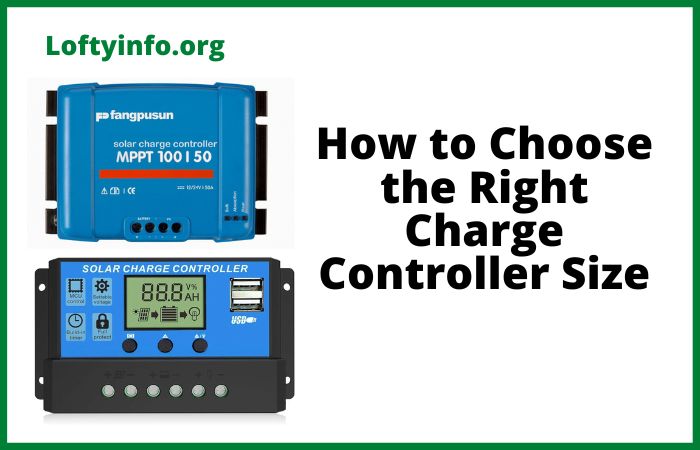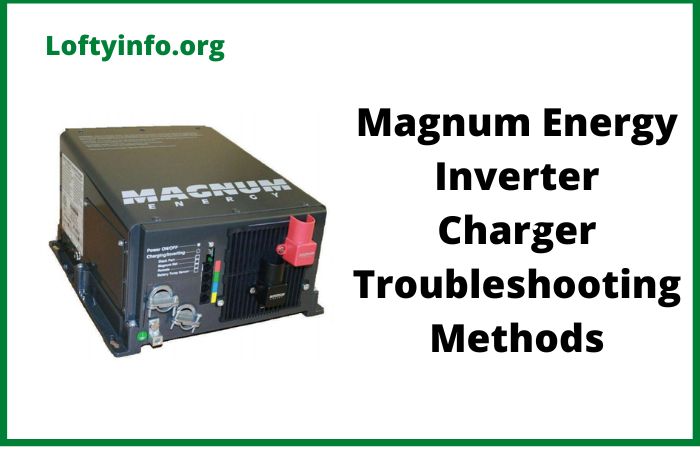Why Inverter Batteries Get Hot While Charging: Causes and Solutions
Inverter batteries are essential for backup power during outages but many users notice their batteries becoming uncomfortably hot during charging.
This heating is not just inconvenient but can permanently damage your battery and create safety hazards.
In this guide, we will explore the main reasons why inverter battery gets hot while charging and how to fix it.
Why Inverter Batteries Get Hot While Charging
1. Overcharging
Think of your battery like a water tank.
When it is full, additional water will overflow and waste energy.
When your battery is fully charged but the inverter keeps pushing electricity into it, that extra energy has nowhere to go except to turn into heat.
This happens when your inverter’s automatic shut off system is not working properly or the High Voltage Disconnect (HVD) of the battery is wrongly configured.
Most batteries need about 12.6 to 13.8 volts when fully charged but faulty inverters might keep pushing 14+ volts continuously causing dangerous overheating.
How to Fix It:
Solution 1: Upgrade to a Smart Multi-Stage Charger
Replace your basic charger with a smart three stage charger that automatically adjusts its behavior.
These chargers work in phases which are;
bulk charging (high current when battery is low)
absorption charging (reduced current as battery fills)
float charging (minimal current to maintain full charge).
Smart chargers can extend battery life significantly.
They use microprocessors to constantly monitor battery condition and adjust accordingly.
When shopping, look for chargers that match your battery type (flooded, AGM or gel) and capacity.
Solution 2: Ensure that the correct High Voltage Disconnect (HVD) is set in the inverter or battery charger
Charging of inverter batteries should be automated without much human or manual input.
This is made possible with the settings inputted into the charge controller and inverter that charges the battery.
With this, battery damaging scenarios like over charging is avoided.
Problem shows up when these settings like the High Voltage Disconnect (HVD) are not properly configured in the charge controller or inverter charging the batteries.
When the HVD is too high, the battery will be overcharged.
Battery overcharging is dangerous to the performance and longevity of the battery.
To avoid this, the HVD in the charge controller and inverter must be set to the right value depending on the type of battery used.
2. Overheating
Batteries naturally produce heat during charging.
This is normal physics at work and does not cause any harm when there is adequate ventilation to remove the heat.
But when the battery is stuffed in tight spaces like closets, cabinets or poorly ventilated rooms, this heat builds up like a car parked in the sun with windows closed.
Without proper airflow, temperatures can quickly rise to dangerous levels.
How to Fix It:
Solution 1: Relocate Battery to Better Environment
Sometimes the best solution is moving your battery to a naturally cooler, better ventilated location.
Ideal spots include covered outdoor areas protected from rain, well ventilated garages or basements with good air circulation.
When relocating, use proper gauge wire for the distance typically 10 AWG for runs up to 20 feet, 8 AWG for longer distances to prevent voltage drop.
Install the battery on a raised platform to allow air circulation underneath.
Ensure the new location stays between 50-80°F year round if possible.
Solution 2: Improve Existing Space Ventilation
If relocation is not possible, dramatically improve ventilation in the current location.
Install passive vents near the floor and ceiling to create natural convection currents,
Cool air enters low while hot air exits high.
Cut 4 to 6 inches holes and install weatherproof vents.
For enclosed spaces, install a small exhaust fan in the upper area to actively pull hot air out.
Ensure incoming air is not preheated by passing through hot areas.
Remove any unnecessary items stored near the battery that block airflow.
Paint nearby walls with light colors to reflect heat rather than absorb it.
If the battery is in a cabinet, remove the back panel or install large ventilation grilles.
Consider installing a small window air conditioner vent kit to bring in outside air if the space is completely enclosed.
Even simple modifications like keeping doors open during charging can significantly improve air circulation.
3. High Charging Current
Charging batteries with high current is one of the major reasons why inverter batteries get hot during charging.
When your inverter or solar charge controller pushes too much electrical current into your battery too quickly, the battery can’t absorb all that energy efficiently.
Due to this, it converts the excess energy to heat.
This commonly happens with cheaper inverters that do not have current limiting features or when people use automotive battery chargers designed for quick charging on inverter batteries that need a slower and gentle charging.
How to Fix It:
Solution 1: Install Current Limiting Resistors or Controllers
Add current limiting components between your charger and battery to physically restrict the maximum current flow.
Purchase a current limiting module designed for your battery capacity available online for $25-60.
These modules typically include adjustable potentiometers that let you set the maximum current.
For a 100Ah battery, set the limit to 15 to 20 amperes maximum.
Installation involves connecting the limiter in series with your charging circuit.
Positive wire from charger goes to limiter input, limiter output goes to battery positive terminal.
Some advanced models include digital displays showing real time current flow.
Alternatively, you can use high wattage resistors calculated for your specific needs though this requires more technical knowledge.
Current limiting not only reduces heat but extends battery life by preventing stress from high charge rates.
Monitor the system for the first few charging cycles to ensure proper operation and make adjustments as needed.
Solution 2: Upgrade to Variable Current Charger
Replace your fixed output charger with a variable current model that allows you to adjust charging rates.
Quality variable chargers offer precise control over charging parameters.
These chargers typically feature dial controls or digital interfaces where you can set specific amperage levels.
Start with low current settings (10% of battery capacity) and gradually increase if needed.
Many variable chargers also include current ramping features that automatically start low and increase gradually as the battery accepts charge.
This mimics the natural charging curve that batteries prefer.
When selecting a variable charger, ensure it matches your battery chemistry (flooded lead-acid, AGM, gel or lithium) as each type has different optimal charging profiles.
4. Old or Damaged Battery
As batteries age, their internal components deteriorate.
Think of it like old plumbing pipes get clogged and corroded, making water flow less efficiently.
In batteries, the chemical plates get coated with sulfur deposits and internal connections become corroded.
This forces the battery to work harder to accept charge creating more heat in the process.
Old batteries often develop internal short circuits.
How to Fix It:
Solution 1: Perform Deep Maintenance and Restoration
Begin with thorough cleaning and inspection of all battery components.
Remove the battery from service and clean terminals with a mixture of baking soda and water (1 tablespoon per cup) using a toothbrush to scrub away corrosion.
Rinse with clean water and dry completely.
For flooded batteries, check electrolyte levels in each cell.
They should cover the plates by about ½ inch.
Add only distilled water and never tap water which contains minerals that damage batteries.
Test specific gravity in each cell using a hydrometer.
Readings should be consistent across cells (typically 1.265-1.280 for fully charged batteries).
Significant variations indicate internal problems.
Apply petroleum jelly or battery terminal protector spray to prevent future corrosion.
Perform an equalization charge if your battery and charger support it.
This controlled overcharge helps break down sulfur deposits on plates.
Monitor temperature closely during equalization and stop if the battery exceeds 125°F.
This process can restore 20-30% capacity in moderately sulfated batteries.
Solution 2: Replace Faulty Batteries With New Batteries
In so many cases, trying to restore faulty batteries will not fix inverter batterie’s issue of getting hot while charging.
This is due to the level of damage the battery has sustained and how long the battery has been used.
At this point, the best thing to do is to make sure that you purchase new batteries to replace the old and faulty ones.
This will help solve the problem of inverter battery getting hot when charging.
5. Water Loss and Electrolyte Concentration – Chemical Imbalance
Flooded lead acid batteries contain a mixture of water and sulfuric acid called electrolyte.
During charging, some water evaporates leaving behind a more concentrated acid solution.
This concentrated acid conducts electricity differently, creating more resistance and heat.
Hot weather accelerates water loss and many people forget to check and refill their batteries regularly.
Some battery types are sealed and can’t be refilled but flooded batteries need regular maintenance.
How to Fix It:
Solution 1: Implement Regular Water Level Maintenance Program
Establish a monthly inspection routine to check and maintain proper electrolyte levels.
Purchase a battery hydrometer with built in thermometer to test both specific gravity and water levels accurately.
Create a maintenance log recording date, water added, specific gravity readings and temperature for each cell.
Proper electrolyte level should cover plates by ½ to ¾ inch.
Use a flashlight to inspect each cell carefully.
When adding water, use only distilled water by adding slowly to prevent splashing.
Never overfill as electrolyte expands when heated during charging.
After adding water, let the battery rest for 2-4 hours before charging to allow proper mixing.
Check levels more frequently during hot weather when evaporation accelerates.
Solution 2: Upgrade to Maintenance Free Battery Technology
Replace problematic flooded batteries with sealed AGM or gel batteries that eliminate water loss issues entirely.
AGM batteries use absorbed glass mat technology where electrolyte is held in glass fiber separators preventing stratification and eliminating maintenance requirements.
Gel batteries use thickened electrolyte that does not separate or require water additions.
Both technologies typically run 10-15°F cooler than flooded batteries during charging because they have lower internal resistance and do not experience electrolyte concentration issues.
While initial cost is higher than flooded batteries, maintenance savings and longer life span often justify the investment.
AGM batteries are particularly good for hot climates because they are more tolerant of temperature extremes.
When upgrading, ensure your charger is compatible with the new battery chemistry.
AGM and gel batteries require different charging profiles than flooded batteries.
Many modern smart chargers include selectable battery type settings.
Consider the upgrade especially if you frequently travel or have difficulty performing regular maintenance.
If you have a bigger budget that will accommodate lithium batteries, I will advise you to buy lithium batteries.
This is because lithium batteries out perform lead acid, AGM and gel batteries in performance.
Lithium batteries also last longer and have a higher Depth Of Discharge (DOD).
Safety Warning and Final Tips
Hot batteries can leak dangerous acid, produce explosive gases or even catch fire.
If your battery becomes too hot to touch (over 120°F/50°C), stop charging immediately and investigate the cause before continuing.
Regular monitoring with a simple thermometer can prevent problems before they become dangerous.
Most battery problems develop gradually so catching them early saves money and prevents safety hazards.
Remember that some warmth during charging is normal.
It is only when batteries become uncomfortably hot that you need to take action.
When in doubt, consult a qualified technician rather than risk damage to your equipment or safety.
By implementing these comprehensive solutions, you can significantly reduce battery heating problems, extend battery life and ensure a safe, reliable operation of your inverter system for years to come.
This will help solve the problem of inverter batteries getting hot while charging.






